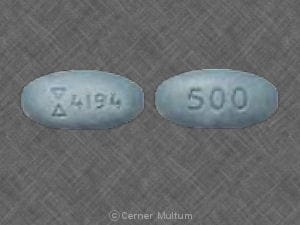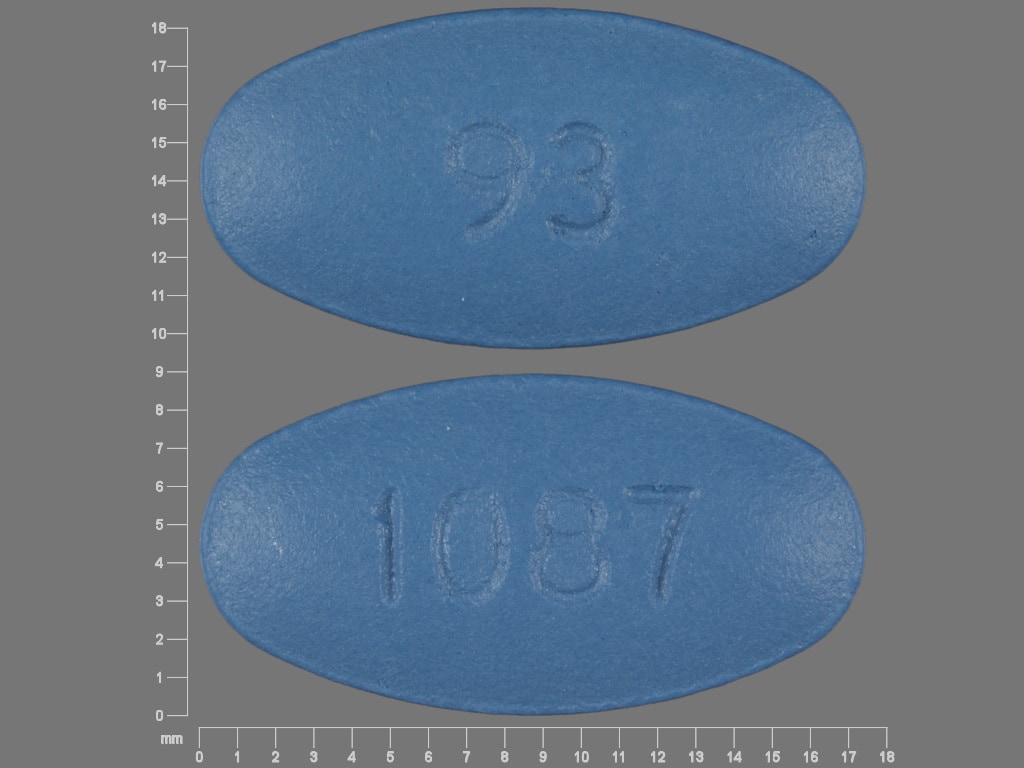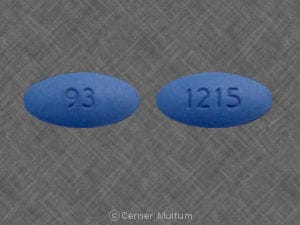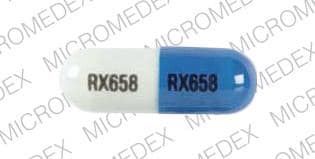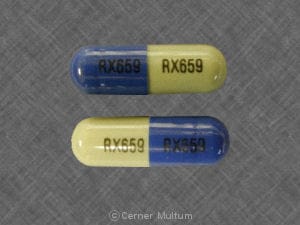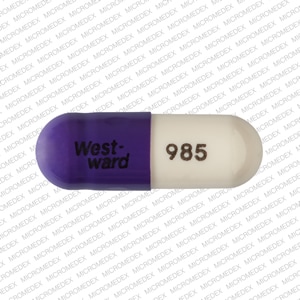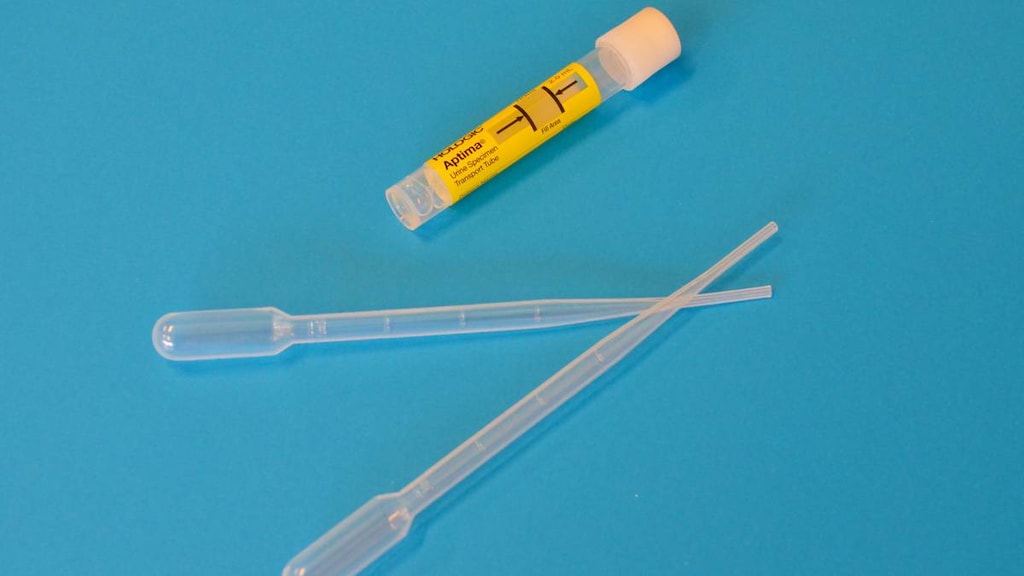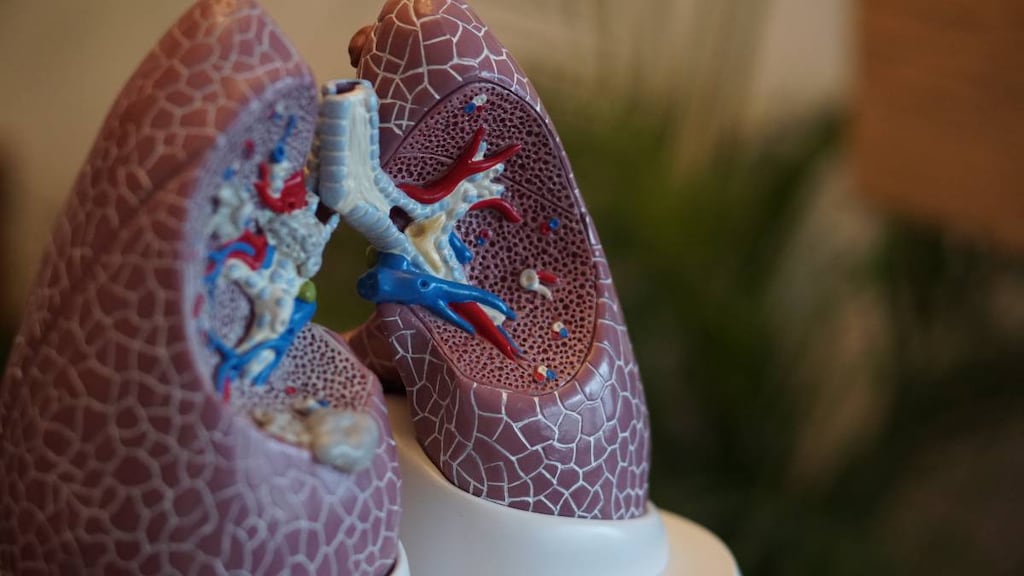Dosage Forms
Excipient information presented when available (limited, particularly for generics); consult specific product labeling.
Capsule, Oral:
Generic: 250 mg, 500 mg
Suspension Reconstituted, Oral:
Generic: 125 mg/5 mL (150 mL); 250 mg/5 mL (150 mL); 375 mg/5 mL (100 mL)
Tablet Extended Release 12 Hour, Oral:
Generic: 500 mg
Pharmacology
Mechanism of Action
Inhibits bacterial cell wall synthesis by binding to one or more of the penicillin-binding proteins (PBPs), which in turn inhibits the final transpeptidation step of peptidoglycan synthesis in bacterial cell walls, thus inhibiting cell wall biosynthesis. Bacteria eventually lyse due to ongoing activity of cell wall autolytic enzymes (autolysins and murein hydrolases) while cell wall assembly is arrested.
Pharmacokinetics/Pharmacodynamics
Absorption
Oral: Well absorbed; acid stable
Distribution
Distributes into tissues and fluids including bone, pleural and synovial fluid
Excretion
Urine (60% to 85% as unchanged drug)
Time to Peak
Capsules, oral suspension: 30 to 60 minutes; Extended-release tablets: 2.5 hours
Half-Life Elimination
0.6 to 0.9 hours; prolonged with renal impairment (2.3 to 2.8 hours in anuria)
Protein Binding
25% (Aronoff 2007)
Use: Labeled Indications
Acute bacterial exacerbations of chronic bronchitis (extended-release tablets only): Treatment of acute bacterial exacerbations of chronic bronchitis due to Haemophilus influenzae (excluding beta-lactamase-negative, ampicillin-resistant strains only), Moraxella catarrhalis, or Streptococcus pneumoniae.
Lower respiratory tract infections (capsules and oral suspension only): Treatment of lower respiratory tract infections, including pneumonia, caused by S. pneumoniae, H. influenzae, and Streptococcus pyogenes.
Otitis media (capsules and oral suspension only): Treatment of otitis media caused by S. pneumoniae, H. influenzae, staphylococci, and S. pyogenes.
Pharyngitis and tonsillitis: Treatment of pharyngitis and tonsillitis due to S. pyogenes.
Secondary bacterial infections of acute bronchitis (extended-release tablets only): Treatment of secondary bacterial infections of acute bronchitis due to H. influenzae (excluding beta-lactamase negative, ampicillin-resistant strains), M. catarrhalis, or S. pneumoniae.
Skin and skin structure infections, uncomplicated: Treatment of uncomplicated skin and skin structure infections due to Staphylococcus aureus (methicillin-susceptible) or S. pyogenes (capsules and oral suspension only).
Urinary tract infections (capsules and oral suspension only): Treatment of urinary tract infections, including pyelonephritis and cystitis, caused by Escherichia coli, Proteus mirabilis, Klebsiella spp, and coagulase-negative staphylococci.
Contraindications
Hypersensitivity to cefaclor, any component of the formulation, or other cephalosporins
Dosage and Administration
Dosing: Adult
Treatment of susceptible infections: Oral:
Immediate-release: 250 to 500 mg every 8 hours
Extended-release: 500 mg every 12 hours
Indication-specific dosing: Note: An extended-release tablet dose of 500 mg twice daily is clinically equivalent to an immediate-release capsule dose of 250 mg 3 times daily; an extended-release tablet dose of 500 mg twice daily is NOT clinically equivalent to 500 mg 3 times daily of other cefaclor formulations.
Acute bacterial exacerbations of chronic bronchitis: Oral: Extended-release: 500 mg every 12 hours for 7 days
Secondary bacterial infection of acute bronchitis: Oral: Extended-release: 500 mg every 12 hours for 7 days
Dosing: Geriatric
Refer to adult dosing.
Dosing: Pediatric
General dosing, susceptible infection: Mild to moderate infection: Infants, Children, and Adolescents: Oral, immediate release: 20 to 40 mg/kg/day divided every 8 to 12 hours. Maximum daily dose: 1,500 mg/day (Red Book [AAP 2015])
Bronchitis: Adolescents ≥16 years: Extended release tablet: Note: An extended release tablet dose of 500 mg twice daily is clinically equivalent to an immediate release capsule dose of 250 mg 3 times daily; an extended release tablet dose of 500 mg twice daily is NOT clinically equivalent to 500 mg 3 times daily of other cefaclor formulations.
Acute bacterial exacerbations of chronic bronchitis: Oral: Extended release: 500 mg every 12 hours for 7 days
Secondary bacterial infection of acute bronchitis: Oral: Extended release: 500 mg every 12 hours for 7 days
Lower respiratory tract infections: Infants, Children, and Adolescents: Oral immediate release: 20 to 40 mg/kg/day divided every 8 hours; maximum daily dose: 1,000 mg/day. If beta-hemolytic streptococcus/S. pyogenes suspected, treat for at least 10 days.
Otitis media: Infants, Children, and Adolescents: Oral immediate release: 40 mg/kg/day divided every 8 to 12 hours (oral suspension) or every 8 hours (capsule); maximum daily dose: 1,000 mg/day. If beta-hemolytic streptococcus/S. pyogenes suspected, treat for at least 10 days. Note: Cefaclor is not a recommended treatment option in the AAP guidelines (Lieberthal 2013).
Pharyngitis/tonsillitis: Infants, Children, and Adolescents: Oral immediate release: 20 mg/kg/day divided every 8 to 12 hours (oral suspension) or every 8 hours (capsule); maximum daily dose: 1,000 mg/day. If beta-hemolytic streptococcus/S. pyogenes confirmed, treat for at least 10 days. Note: Cefaclor is not a recommended treatment option in the IDSA guidelines and is not considered preferred by the AHA due to its broad spectrum (AHA [Gerber 2009], IDSA [Shulman 2012]).
Skin and skin structure infections, uncomplicated: Infants, Children, and Adolescents: Oral: Immediate release: 20 to 40 mg/kg/day divided every 8 hours; maximum daily dose: 1,000 mg/day. If due to beta-hemolytic streptococcus/S. pyogenes, treat for at least 10 days.
Urinary tract infections: Infants, Children, and Adolescents: Oral: Immediate release: 20 to 40 mg/kg/day divided every 8 hours; maximum daily dose: 1,000 mg/day
Reconstitution
Oral suspension: Refer to manufacturer’s product labeling for reconstitution instructions. Shake well.
Administration
Oral: Administer around-the-clock to promote less variation in peak and trough serum levels.
Capsules and oral suspension: Administer without regard to meals; shake oral suspension well before using
Extended release tablets: Do not chew, crush, or split; administer with or within 1 hour of food.
Dietary Considerations
Extended release tablets should be taken with or within 1 hour of food.
Storage
Store at 20°C to 25°C (68°F to 77°F). Refrigerate suspension after reconstitution and discard after 14 days.
Cefaclor Images
Drug Interactions
Aminoglycosides: Cephalosporins (2nd Generation) may enhance the nephrotoxic effect of Aminoglycosides. Monitor therapy
BCG (Intravesical): Antibiotics may diminish the therapeutic effect of BCG (Intravesical). Avoid combination
BCG Vaccine (Immunization): Antibiotics may diminish the therapeutic effect of BCG Vaccine (Immunization). Monitor therapy
Cholera Vaccine: Antibiotics may diminish the therapeutic effect of Cholera Vaccine. Management: Avoid cholera vaccine in patients receiving systemic antibiotics, and within 14 days following the use of oral or parenteral antibiotics. Avoid combination
Lactobacillus and Estriol: Antibiotics may diminish the therapeutic effect of Lactobacillus and Estriol. Monitor therapy
Nitisinone: May increase the serum concentration of OAT1/3 Substrates. Monitor therapy
Pretomanid: May increase the serum concentration of OAT1/3 Substrates. Monitor therapy
Probenecid: May increase the serum concentration of Cephalosporins. Monitor therapy
Sodium Picosulfate: Antibiotics may diminish the therapeutic effect of Sodium Picosulfate. Management: Consider using an alternative product for bowel cleansing prior to a colonoscopy in patients who have recently used or are concurrently using an antibiotic. Consider therapy modification
Teriflunomide: May increase the serum concentration of OAT1/3 Substrates. Monitor therapy
Tolvaptan: May increase the serum concentration of OAT1/3 Substrates. Management: Patients being treated with the Jynarque brand of tolvaptan should avoid concomitant use of OAT1/3 substrates. Concentrations and effects of the OAT1/3 substrate would be expected to increase with any combined use. Consider therapy modification
Typhoid Vaccine: Antibiotics may diminish the therapeutic effect of Typhoid Vaccine. Only the live attenuated Ty21a strain is affected. Management: Vaccination with live attenuated typhoid vaccine (Ty21a) should be avoided in patients being treated with systemic antibacterial agents. Use of this vaccine should be postponed until at least 3 days after cessation of antibacterial agents. Consider therapy modification
Vitamin K Antagonists (eg, warfarin): Cephalosporins may enhance the anticoagulant effect of Vitamin K Antagonists. Monitor therapy
Test Interactions
Positive direct Coombs', false-positive urinary glucose test using cupric sulfate (Benedict's solution, Clinitest, Fehling's solution).
Adverse Reactions
1% to 10%:
Dermatologic: Rash (1% to 2%; includes erythematous rash, maculopapular rash, or morbilliform rash)
Gastrointestinal: Diarrhea (3%)
Genitourinary: Vaginitis (2%), vulvovaginal candidiasis (2%)
Hematologic & oncologic: Eosinophilia (2%)
Hepatic: Increased serum transaminases (3%)
<1%, postmarketing, and/or case reports: Agitation, agranulocytosis, anaphylaxis, angioedema, aplastic anemia, arthralgia, cholestatic jaundice, confusion, dizziness, drowsiness, hallucination, hemolytic anemia, hepatitis, hyperactivity, insomnia, interstitial nephritis, irritability, nausea, nervousness, neutropenia, paresthesia, prolonged prothrombin time, pruritus, pseudomembranous colitis, seizure, serum sickness, Stevens-Johnson syndrome, thrombocytopenia, toxic epidermal necrolysis, urticaria, vomiting
Warnings/Precautions
Concerns related to adverse effects:
- Hypersensitivity: Anaphylactic reactions have occurred. If a serious hypersensitivity reaction occurs, discontinue and institute emergency supportive measures, including airway management and treatment (eg, epinephrine, antihistamines, and/or corticosteroids).
- Penicillin allergy: Use with caution in patients with a history of penicillin allergy.
- Superinfection: Prolonged use may result in fungal or bacterial superinfection, including C. difficile-associated diarrhea (CDAD) and pseudomembranous colitis; CDAD has been observed >2 months postantibiotic treatment.
Disease-related concerns:
- Gastrointestinal disease: Use with caution in patients with a history of gastrointestinal disease, particularly colitis.
- H. influenzae infections: Beta-lactamase-negative, ampicillin-resistant (BLNAR) strains of H. influenzae should be considered resistant to cefaclor.
- Renal impairment: Use with caution in patients with renal impairment.
Concurrent drug therapy issues:
- Drug-drug interactions: Potentially significant interactions may exist, requiring dose or frequency adjustment, additional monitoring, and/or selection of alternative therapy. Consult drug interactions database for more detailed information.
Dosage form specific issues:
- Benzyl alcohol and derivatives: Some dosage forms may contain sodium benzoate/benzoic acid; benzoic acid (benzoate) is a metabolite of benzyl alcohol; large amounts of benzyl alcohol (≥99 mg/kg/day) have been associated with a potentially fatal toxicity (“gasping syndrome”) in neonates; the “gasping syndrome” consists of metabolic acidosis, respiratory distress, gasping respirations, CNS dysfunction (including convulsions, intracranial hemorrhage), hypotension, and cardiovascular collapse (AAP ["Inactive" 1997]; CDC, 1982); some data suggests that benzoate displaces bilirubin from protein binding sites (Ahlfors, 2001); avoid or use dosage forms containing benzyl alcohol derivative with caution in neonates. See manufacturer’s labeling.
- Extended-release tablet: An extended-release tablet dose of 500 mg twice daily is clinically equivalent to an immediate-release capsule dose of 250 mg 3 times daily; an extended-release tablet dose of 500 mg twice daily is NOT clinically equivalent to 500 mg 3 times daily of other cefaclor formulations.
Monitoring Parameters
Monitor renal function. Observe for signs of anaphylaxis during first dose.
Pregnancy
Pregnancy Risk Factor
B
Pregnancy Considerations
Adverse events were not observed in animal reproduction studies. An increased risk of teratogenic effects has not been observed following maternal use of cefaclor.
Patient Education
What is this drug used for?
- It is used to treat bacterial infections.
Frequently reported side effects of this drug
- Diarrhea
Other side effects of this drug: Talk with your doctor right away if you have any of these signs of:
- Bruising
- Bleeding
- Seizures
- Chills
- Sore throat
- Severe loss of strength and energy
- Severe dizziness
- Passing out
- Burning or numbness feeling
- Unable to pass urine
- Change in amount of urine passed
- Vaginal pain, itching, or discharge
- Clostridium difficile (C. diff)-associated diarrhea like abdominal pain or cramps, severe diarrhea or watery stools, or bloody stools
- Signs of a significant reaction like wheezing; chest tightness; fever; itching; bad cough; blue skin color; seizures; or swelling of face, lips, tongue, or throat.
Note: This is not a comprehensive list of all side effects. Talk to your doctor if you have questions.
Consumer Information Use and Disclaimer: This information should not be used to decide whether or not to take this medicine or any other medicine. Only the healthcare provider has the knowledge and training to decide which medicines are right for a specific patient. This information does not endorse any medicine as safe, effective, or approved for treating any patient or health condition. This is only a brief summary of general information about this medicine. It does NOT include all information about the possible uses, directions, warnings, precautions, interactions, adverse effects, or risks that may apply to this medicine. This information is not specific medical advice and does not replace information you receive from the healthcare provider. You must talk with the healthcare provider for complete information about the risks and benefits of using this medicine.
